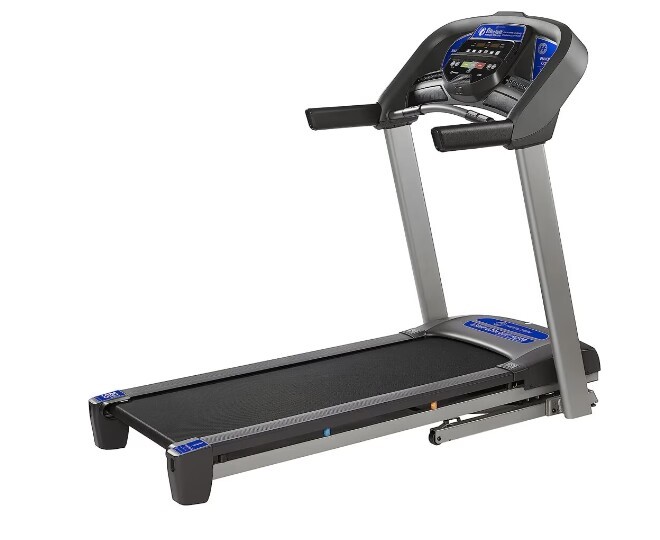Things To Consider When Buying Treadmills
Things To Consider When Buying Treadmills
Size: The size of the treadmill you buy is an important consideration to keep in mind. If you’re in a small space or wish to stow away your treadmill when it’s not in use, look for one that folds to a slim size. Many treadmills come with slow-motion hydraulic closing features that eliminate the clunking “drop” that might occur when you fold your treadmill manually.
If you’re looking for a treadmill that can be used in very tight quarters, you may be best served with a low-weight under-desk treadmill. Many of these come on wheels for easy transport.
Track Length: Treadmill deck size is designated by length and width. The length of the treadmill track you choose should be able to comfortably accommodate your stride length so you don’t feel cramped or compromised while running. If you’re tall, you’ll need a longer track than someone with shorter legs. Stride length is also determined by speed. Walkers and light joggers don’t need as much length as fast runners do.
Weight Capacity: Make sure that the treadmill you buy can accommodate your weight, as well as the weights of others who may use it. This isn’t an attribute to skimp on. Running or walking on a treadmill that isn’t designed for your weight can wear down its motor, causing it to break or malfunction. It may also compromise your safety if you aren’t adequately supported on the track.
Portability and Storage: Many treadmills of all sizes have built-in wheels that allow you to transport them from room to room, but, as a word of caution, even the smallest treadmill may be challenging to lug up or down stairs safely or easily.
Some treadmills fold down enough to store under couches or beds. Others are designed to be stored upright. Measure the space you wish to store your treadmill in and check it against the treadmill’s dimensions when folded so you won’t have any surprises.
Speed Range: If you’re an elite runner, you’ll want a treadmill that can accommodate speeds up to 15 miles per hour (or more). If this is the case, you may be best served with a commercial treadmill.
Many treadmills max out at around 10 miles per hour. No matter what your maximum speed capacity requirements are, look for a treadmill that lets you manually control speeding up and slowing down in comfortable increments.
Incline Range: Not every treadmill has an incline feature so make sure to check before you buy if this is important to you. If you’re on a motorized treadmill, the higher your incline is, the tougher your workout will be. Like speed, incline controls should be easy to reach and manage manually.
Console and Controls: Speed, incline, and program controls may be located in the treadmill’s grip handles, console, or both. Some slim treadmills have monitor screens built into the body of the treadmill. Others have consoles positioned higher at eye level.
If you’d like to run programs or watch exercise videos for nontreadmill workouts, look for a console that pivots and tilts so you can view it easily from anywhere in the room.



 Tel : +0592 6105769
Tel : +0592 6105769 Fax : +0592 6105769
Fax : +0592 6105769 Email : sales@wuwind.com
Email : sales@wuwind.com